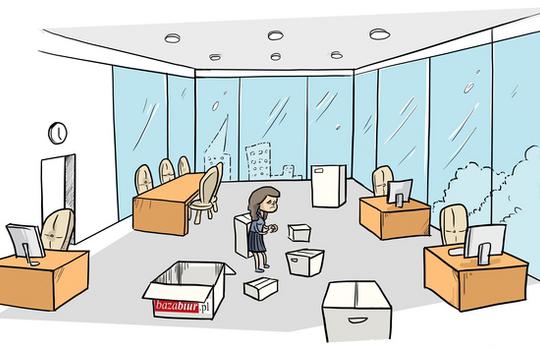Prior to signing a long-term lease agreement, it is worth including appropriate clauses within the contract that will provide the tenant with flexibility in terms of, for example, reducing and increasing occupied space, vacating the space earlier, an opportunity to expand and revision of rents.
Space
What is a space plan? In short, a space plan is a functional arrangement of rooms to be occupied by future tenants including office space, conference rooms, areas for guests/clients, reception, kitchens, server rooms, storage and other spaces (for example, areas for informal meetings, recreational zones, places for working in silence and telephone booths) as well as internal communication etc. Space plans will indicate whether the tenant will need to lease, for example, 2,000 sq m of office space or if 1,500 sq m would be sufficient. Development of the space plan should always be carried out before signing the lease agreement and should be confirmed by both parties so that no changes will affect the rents and valuation of fit-out works.
Break option
Tenants, especially corporate clients, often ask to include a “break option” within the agreement. It ensures the option for an early breach of agreement. A typical office lease agreement in Warsaw and other developed regional markets is signed for a period of five years, or longer in the case of larger companies. With a break option, a tenant can terminate the contract according to a date agreed in advance, for example with effect from the third anniversary of lease commencement. Nevertheless, such options are included very rarely but can be found especially in older buildings that must compete with newer, more technically advanced objects. In the case of new buildings, the break option is even rarer.
Change of square meterage
Another aspect that the tenant should remember is the change of square meterage during the duration of a lease agreement. This gives the opportunity to either increase or reduce the occupied space after, for example, three years. This option allows the tenant to either return part of the occupied space to the landlord or select additional space. The landlord has the obligation to take part of the “unwanted” space or propose the lease of additional space. In the case of expansion, the tenant might have the opportunity to select specific space, in a specific place and at a specific time (pre-defined option) or may have the right of lease privilege according to space availability.
Renewal
It is also worth focusing on the clause regarding the renewal of the lease agreement. Sometimes, after the agreement’s expiration, a tenant wants to remain in the building but does not have such guarantees in the contract. The landlord might be more concerned about leasing their currently occupied space to a new, bigger tenant rather than continuing the agreement signed with the current occupier.
Rent revision
With long-term lease agreements, signed for 10 years or longer, it is of increasingly crucial importance to revise rents after a certain time, five years for example. Witnessing constantly changing market conditions, growing supply of office space and decreasing rents, tenants may well like to take advantage of the situation and have the opportunity to revise the headline rent in accordance with current rates. Nevertheless, landlords are not so eager to approve such concessions.
Sublease
Furthermore, it is worth focusing on the right to sublease space. The tenant can either sublease part or the whole of its unoccupied space to another tenant or sublease space from another company if required. Sublease options are of crucial importance during crisis and restructuring periods. If a tenant included such an option in the agreement, they can sublease part of the leased space in order to reduce costs. Furthermore, the landlord cannot refuse such an operation without proper justification.
The role of the advisor
The role of a good advisor is to, among other things, help the client in formulating relevant clauses in office lease agreements. The advisor knows both the landlord’s limitations and the tenant’s abilities and expectations. More flexible lease agreements, signed even for a period of three years, can be concluded for older office buildings while in newer buildings, the period of five years is the norm. The limitations are much bigger due to, for example, the requirements of the institution financing the building. The length of lease agreement influences not only the building’s valuation but also the more beneficial conditions regarding its financing.
For a tenant, a conveniently negotiated lease agreement is one of the tools for conducting a profitable business.












